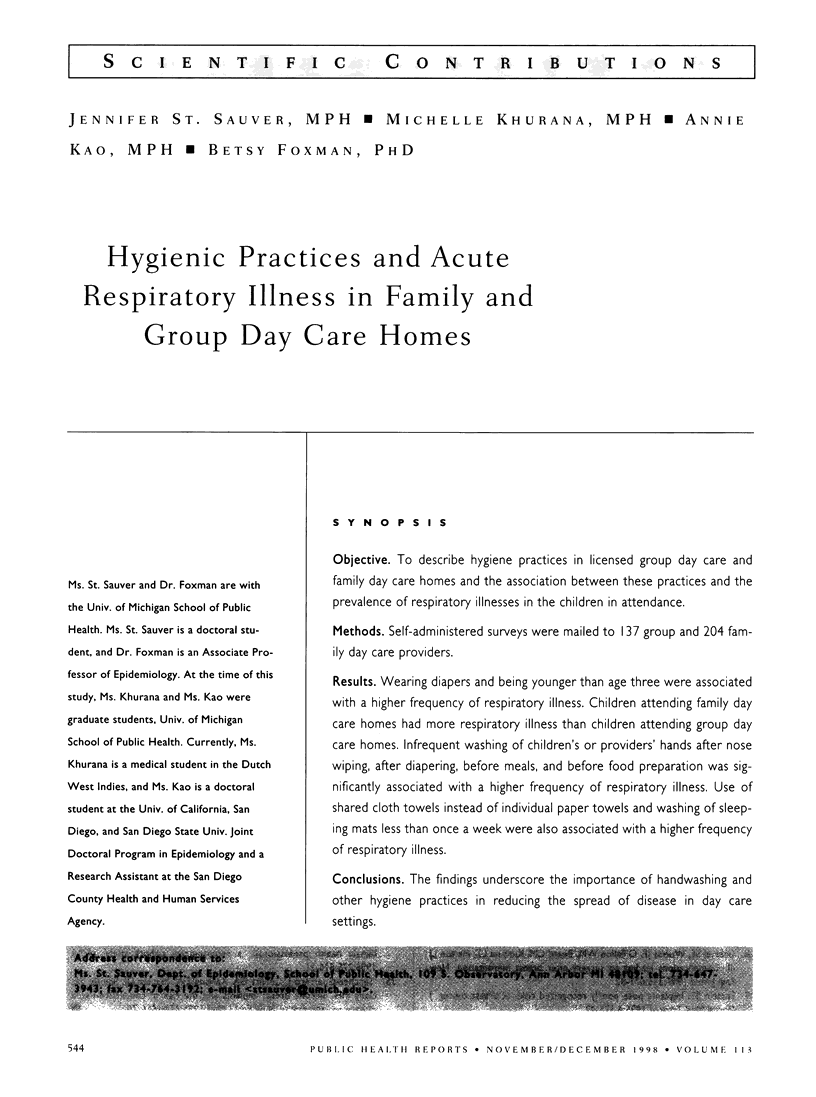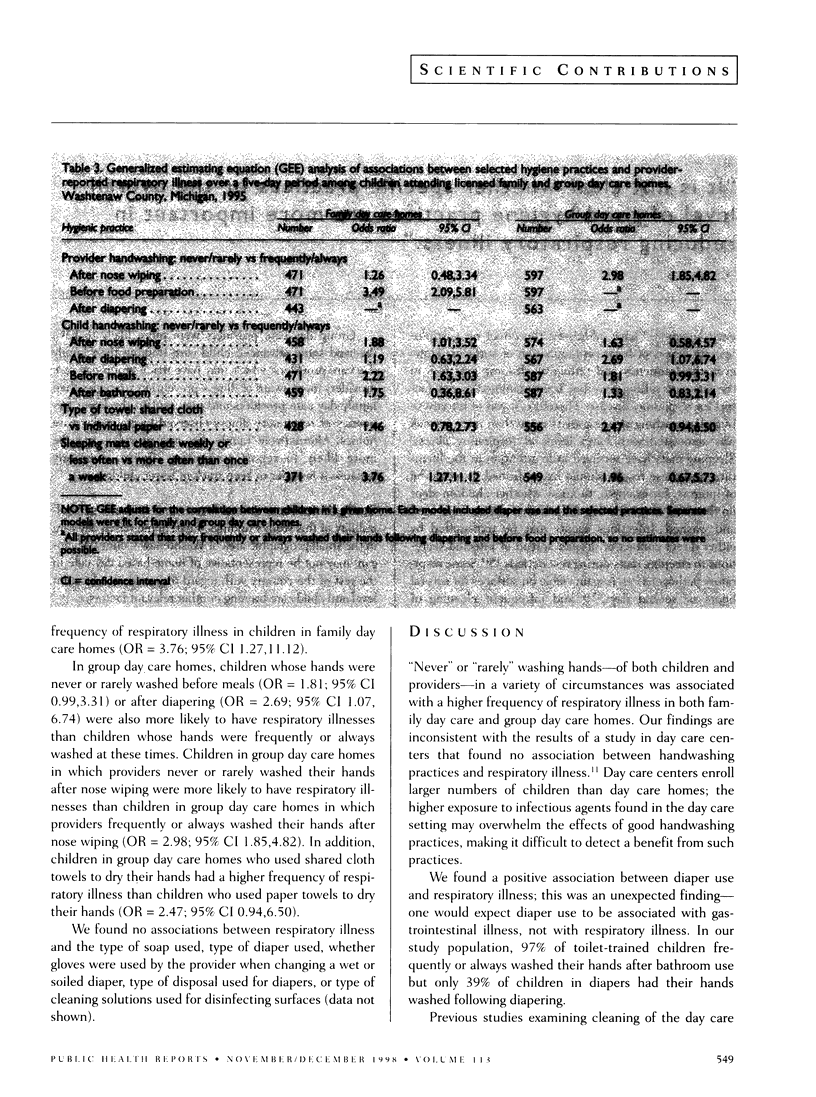Abstract
OBJECTIVE: To describe hygiene practices in licensed group day care and family day care homes and the association between these practices and the prevalence of respiratory illnesses in the children in attendance. METHODS: Self-administered surveys were mailed to 137 group and 204 family day care providers. RESULTS: Wearing diapers and being younger than age three were associated with a higher frequency of respiratory illness. Children attending family day care homes had more respiratory illness than children attending group day care homes. Infrequent washing of children's or providers' hands after nose wiping, after diapering, before meals, and before food preparation was significantly associated with a higher frequency of respiratory illness. Use of shared cloth towels instead of individual paper towels and washing of sleeping mats less than once a week were also associated with a higher frequency of respiratory illness. CONCLUSIONS: The findings underscore the importance of handwashing and other hygiene practices in reducing the spread of disease in day care settings.
Full text
PDF







Selected References
These references are in PubMed. This may not be the complete list of references from this article.
- Belongia E. A., Osterholm M. T., Soler J. T., Ammend D. A., Braun J. E., MacDonald K. L. Transmission of Escherichia coli O157:H7 infection in Minnesota child day-care facilities. JAMA. 1993 Feb 17;269(7):883–888. [PubMed] [Google Scholar]
- Black R. E., Dykes A. C., Anderson K. E., Wells J. G., Sinclair S. P., Gary G. W., Jr, Hatch M. H., Gangarosa E. J. Handwashing to prevent diarrhea in day-care centers. Am J Epidemiol. 1981 Apr;113(4):445–451. doi: 10.1093/oxfordjournals.aje.a113112. [DOI] [PubMed] [Google Scholar]
- Fleming D. W., Cochi S. L., Hightower A. W., Broome C. V. Childhood upper respiratory tract infections: to what degree is incidence affected by day-care attendance? Pediatrics. 1987 Jan;79(1):55–60. [PubMed] [Google Scholar]
- Gwaltney J. M., Jr, Moskalski P. B., Hendley J. O. Hand-to-hand transmission of rhinovirus colds. Ann Intern Med. 1978 Apr;88(4):463–467. doi: 10.7326/0003-4819-88-4-463. [DOI] [PubMed] [Google Scholar]
- Hall C. B., Douglas R. G., Jr Modes of transmission of respiratory syncytial virus. J Pediatr. 1981 Jul;99(1):100–103. doi: 10.1016/s0022-3476(81)80969-9. [DOI] [PubMed] [Google Scholar]
- Harsten G., Prellner K., Heldrup J., Kalm O., Kornfält R. Acute respiratory tract infections in children. A three-year follow-up from birth. Acta Paediatr Scand. 1990 Apr;79(4):402–409. doi: 10.1111/j.1651-2227.1990.tb11484.x. [DOI] [PubMed] [Google Scholar]
- Henderson F. W., Giebink G. S. Otitis media among children in day care: epidemiology and pathogenesis. Rev Infect Dis. 1986 Jul-Aug;8(4):533–538. doi: 10.1093/clinids/8.4.533. [DOI] [PubMed] [Google Scholar]
- Hurwitz E. S., Gunn W. J., Pinsky P. F., Schonberger L. B. Risk of respiratory illness associated with day-care attendance: a nationwide study. Pediatrics. 1991 Jan;87(1):62–69. [PubMed] [Google Scholar]
- Kotch J. B., Weigle K. A., Weber D. J., Clifford R. M., Harms T. O., Loda F. A., Gallagher P. N., Jr, Edwards R. W., LaBorde D., McMurray M. P. Evaluation of an hygienic intervention in child day-care centers. Pediatrics. 1994 Dec;94(6 Pt 2):991–994. [PubMed] [Google Scholar]
- Van R., Morrow A. L., Reves R. R., Pickering L. K. Environmental contamination in child day-care centers. Am J Epidemiol. 1991 Mar 1;133(5):460–470. doi: 10.1093/oxfordjournals.aje.a115913. [DOI] [PubMed] [Google Scholar]
- Wald E. R., Guerra N., Byers C. Frequency and severity of infections in day care: three-year follow-up. J Pediatr. 1991 Apr;118(4 Pt 1):509–514. doi: 10.1016/s0022-3476(05)83370-0. [DOI] [PubMed] [Google Scholar]


